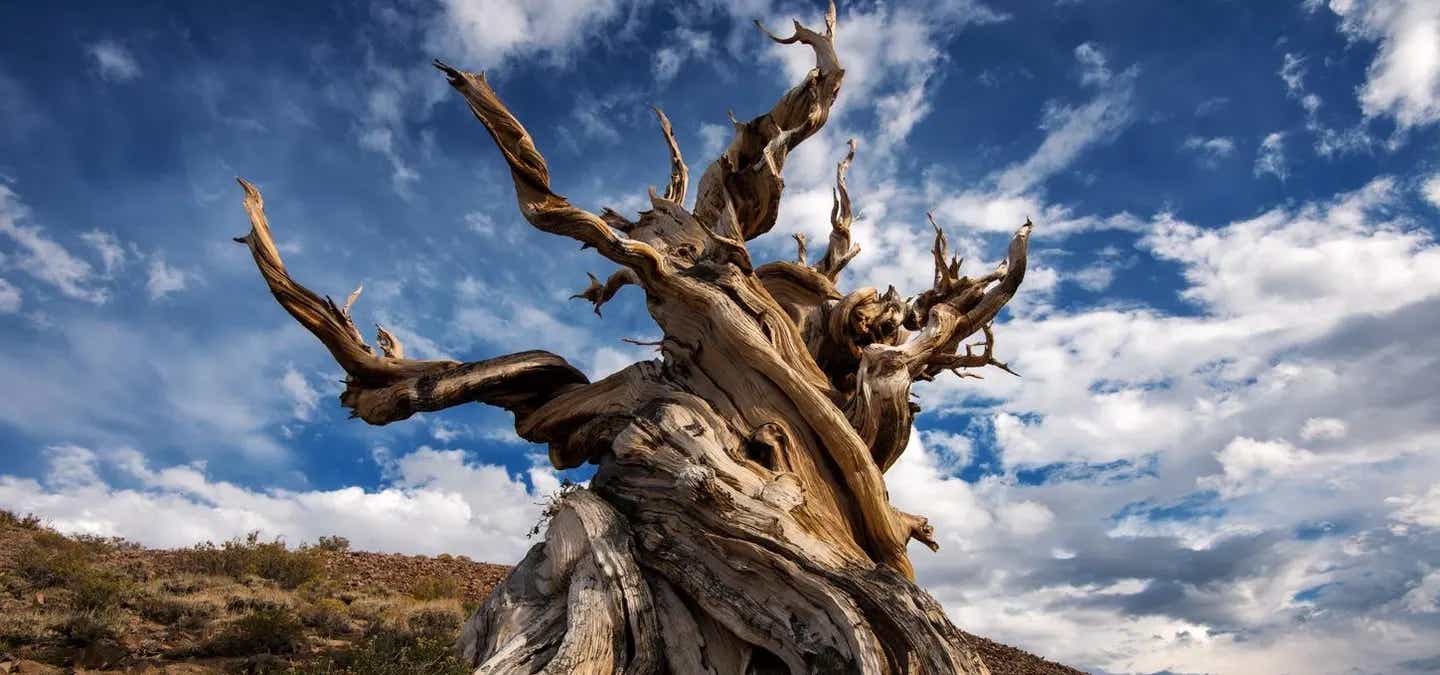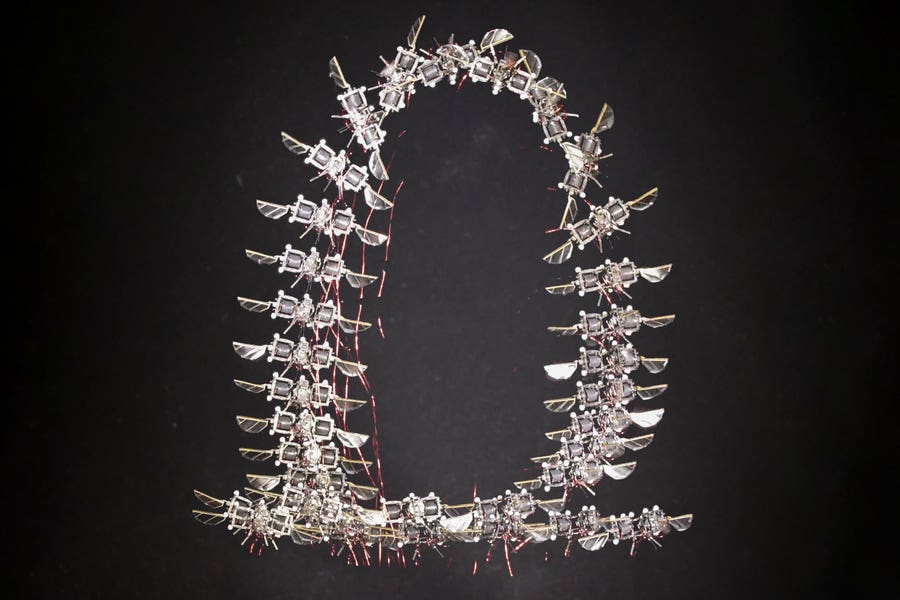At 4,800-years-old, the world’s oldest living tree predates the Egyptian pyramids
In the quiet reaches of California’s White Mountains, one tree has survived through 4,800 years of storms, droughts, empires, and empires’ collapse. Known as Methuselah, this bristlecone pine has stood…

A 4,800-year-old tree named Methuselah survives in California’s mountains. (CREDIT: Getty Images)
In the quiet reaches of California’s White Mountains, one tree has survived through 4,800 years of storms, droughts, empires, and empires' collapse. Known as Methuselah, this bristlecone pine has stood silently through the birth of writing, the rise of Rome, and the digital revolution. While modern technology rushes forward, this tree reminds the world that slow and steady can sometimes win the race in the most extraordinary way.
A Tree Older Than History Books
Methuselah is a Great Basin bristlecone pine. It’s not tall or especially eye-catching at first glance. But beneath its twisted trunk lies a secret few trees can match: a lifespan that dates back to long before the Egyptian pyramids. Estimated to be over 4,800 years old, Methuselah is widely accepted as the world’s oldest known non-clonal tree—that is, a single living organism that hasn’t regrown from another or cloned itself.
What allows a tree to last this long? The secret is in the struggle. Methuselah grows just below the tree line, high in a subalpine zone filled with thin soil, harsh winds, and freezing temperatures. Unlike trees that grow fast in rich environments, bristlecone pines crawl forward in time. Their short growing season, slow development, and nutrient-poor soil produce dense, resin-filled wood that’s incredibly resistant to insects, fungi, and decay.
In fact, researchers have found that some of Methuselah’s needle clusters, or fascicles, can last up to 45 years before falling off—a record among conifers. Most other pines shed theirs in two to four years. This unique needle retention reduces the need to regrow foliage and saves valuable energy.
The tree’s growth rings are tightly packed, sometimes just a fraction of a millimeter wide. Its trunk, shaped by centuries of fierce winds, grows asymmetrically, with only a thin strip of living tissue connecting the roots to a few active branches.
The Discovery That Changed Everything
Methuselah’s story didn’t make headlines until 1953, when dendrochronologist Edmund Schulman took a detour into the White Mountains. Schulman had spent over a decade seeking the world’s oldest trees. That summer, his quest led him to a high-elevation grove on the far edge of the dry forest line.
Related Stories
There, he used an increment borer—a narrow drill that removes a tiny cylinder of wood without harming the tree—to extract a core sample. By counting the rings, Schulman confirmed what seemed impossible: the tree was at least 4,800 years old. Later samples in 1957 confirmed Methuselah’s age and placed it as the oldest living non-clonal tree ever documented.
To protect the tree from vandalism, the U.S. Forest Service kept Methuselah’s exact location a secret. For years, it remained a silent guardian in the forest, hidden from view. That veil was broken in 2021, when photographs leaked online revealed its location. The forest service still refuses to confirm which tree it is along the 4.5-mile Methuselah Trail in Inyo National Forest.
The Global Contest for Oldest Tree
Methuselah may hold the official title, but other ancient trees challenge its crown. In Chile, a massive tree called Gran Abuelo—Spanish for “Great-Grandfather”—has sparked fresh debate. Found in Alerce Costero National Park, this Fitzroya cupressoides could be older than Methuselah.
Climate scientist Jonathan Barichivich estimated Gran Abuelo’s age at 5,484 years based on partial core samples and statistical modeling. However, without a full core (which is nearly impossible due to decay at the tree’s center), the number remains unverified. Even so, Barichivich’s findings have raised awareness about climate resilience and the need to preserve ancient forests before they vanish.
Methuselah also had an older sibling, now lost to history. In 1964, a bristlecone pine called Prometheus was cut down near Wheeler Peak in Nevada as part of research on glacial history. Only after it was felled did scientists realize it had lived for at least 4,862 years—possibly longer. That moment reshaped policies for protecting ancient trees and served as a stark reminder of what’s lost when scientific curiosity goes unchecked.
Ancestral Roots and Indigenous Legends
Long before Schulman’s discovery, Indigenous communities understood the value of bristlecone pines. The Paiute people were among the first to enter the White Mountains some 4,000 years ago. They respected these trees not only for their endurance, but also for their unusual wood. Hard to burn and oddly shaped, it was better suited for shelter than for fire.
The Shoshone tribe also held these trees in high regard. They believed the bristlecone’s resin had healing properties. Warmed and placed on wounds, it was used to treat boils and skin ailments. In their stories, the trees stood as symbols of survival and the enduring spirit of nature.
These tribes saw in bristlecones what modern science would later confirm—living beings that had learned to survive in extreme conditions. Through ritual and respect, they honored what many cultures now overlook: that nature's oldest lives carry deep wisdom.
Built to Endure the Worst
What makes Methuselah so long-lived is not just its strength, but its restraint. Where other trees stretch toward the sky, bristlecones hunker down. They grow slowly, spend little, and resist pests with their dense, resinous wood.
Their environment actually helps them live longer. High altitudes mean colder temperatures and fewer threats from disease or decay. Their twisted trunks and narrow rings make them hard to invade. In extreme cases, only a thin layer of living wood is needed to keep the tree alive, allowing most of the trunk to turn into dead, protective armor.
Scientists call bristlecones "extremeophiles"—organisms that thrive in tough environments. That hardiness has helped Methuselah survive a changing world, including climate shifts that wiped out other species. But its future isn’t guaranteed.
In recent years, rising temperatures and the worst drought in 1,200 years have begun killing off nearby pines. Bark beetles are on the rise, and wildfires threaten even the most remote areas. Scientists warn that the combination of extreme heat, prolonged drought, and pests could create a “perfect storm” for ancient trees like Methuselah.
A World of Ancient Witnesses
Methuselah is far from the only tree that has outlived generations. Around the world, other trees offer stories just as remarkable:
- In Iran, the Sarv-e Abarqu cypress has stood for over 4,000 years.
- A yew in Wales, the Llangernyw Yew, may be between 4,000 and 5,000 years old.
- On Crete, the Olive Tree of Vouves has survived for more than 2,000 years.
- In Japan, the Jomon Sugi could be up to 7,200 years old, though estimates vary widely.
- Brazil’s Patriarca da Floresta, a giant Cariniana tree, is at least 3,000 years old.
- The Alerce Milenario in Chile’s forests, another Fitzroya, dates back 3,646 years.
- Sri Lanka’s sacred Jaya Sri Maha Bodhi fig tree was planted in 288 B.C.
- Mount Etna’s Chestnut Tree of One Hundred Horses is believed to be 2,000 to 4,000 years old.
- The Senator, a U.S. pond cypress, lived 3,500 years before it was lost to fire in 2012.
Each of these trees holds the memory of entire civilizations. Their presence is a reminder that nature measures time in ways far beyond human lifespans.
The Wisdom in Stillness
In a world obsessed with speed, Methuselah offers a powerful message: sometimes, survival means slowing down. Growing in tough places, adapting to extremes, and using only what’s needed, these trees endure while others fall.
From school textbooks to global climate talks, ancient trees now take center stage. They are biological time capsules, environmental markers, and spiritual guides. Protecting them means honoring not just their age, but what they’ve taught about resilience.
Methuselah has lived through every chapter of recorded history. With care, it may witness more. But its survival—and that of trees like it—depends on what choices are made now.
------ Correction made on May 27, 2025 ------
The original opening image was replaced with a verified photograph titled “Aerial view of the White Mountains, looking north over the Pellisier Flats to Montgomery and Boundary Peaks at the end of the range,” after questions arose about whether the previous mountainscape actually depicted California’s White Mountains.
Note: The article above provided above by The Brighter Side of News.
Like these kind of feel good stories? Get The Brighter Side of News' newsletter.



